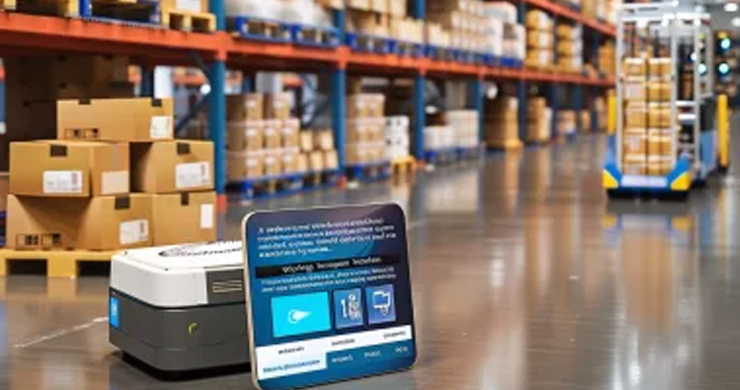Warehouse productivity is crucial to operational efficiency and customer satisfaction. However, increasing staff is not always the most viable or cost-effective solution. Here are several strategies to improve your warehouse productivity without increasing the number of workers.
Workflow optimization
- Process analysis: The first step in improving productivity is to conduct a thorough analysis of current processes. Identifying bottlenecks and areas where workers waste time is fundamental.
- Process redesign: Based on analysis, redesign workflows to eliminate unnecessary steps and reduce movements. Implementing a more streamlined workflow can significantly reduce processing time and increase productivity.
Technology implementation
- Warehouse Management System (WMS): Automation through a WMS can completely transform your warehouse operations. A WMS optimizes inventory management, improves picking and packing accuracy, and provides real-time visibility of all operations.
- Voice picking and RFID scanning: These technologies enable workers to perform tasks faster and with fewer errors. Voice picking guides operators through the warehouse efficiently, while RFID scanning enables fast and accurate product identification.
Intelligent storage
- Efficient warehouse design: Reorganize the warehouse layout to minimize movement. Place high-turnover products in easily accessible areas and group similar items for easy picking.
- Automated storage systems: Implement systems such as mobile shelving or vertical carousels that allow a more efficient use of space and reduce product search time.
Staff training and motivation
- Ongoing training: Investing in staff training is essential to improve productivity. Make sure workers are familiar with best practices and know how to use available technology tools.
- Motivation and recognition: Motivated personnel are more productive. Implement recognition and reward programs to incentivize performance and maintain high levels of motivation among employees.
Improved communication
- Internal communication: Establishing clear and efficient communication channels within the warehouse is crucial. Use real-time communication systems to coordinate tasks and solve problems quickly.
- Constant feedback: Foster an environment where workers can give feedback on processes. This not only improves morale, but can also provide valuable ideas for optimizing operations.
Preventive maintenance
- Well-maintained equipment: Regular maintenance of equipment ensures that it operates efficiently and reduces downtime. Implement a preventive maintenance program to avoid unexpected interruptions.
- Equipment monitoring: Uses sensors and monitoring tools to monitor the status of equipment and detect potential problems before they become critical failures.
Efficient inventory management
- Just-in-time (JIT): Implements just-in-time inventory strategies to reduce stock levels and minimize storage costs. This also improves cash flow and reduces the space needed to store products.
- Inventory turnover: Ensure that products are properly rotated to avoid obsolescence and spoilage. A WMS can help manage inventory turnover more effectively.
Conclusion
Increasing warehouse productivity without increasing staff is a challenge, but it is entirely feasible with the right strategies. Optimizing workflows, implementing advanced technologies, training and motivating staff, and managing inventory efficiently are key steps to achieving this. By adopting these measures, your warehouse can operate more efficiently, reducing costs and improving customer satisfaction without the need to increase headcount.
You may also be interested in…





